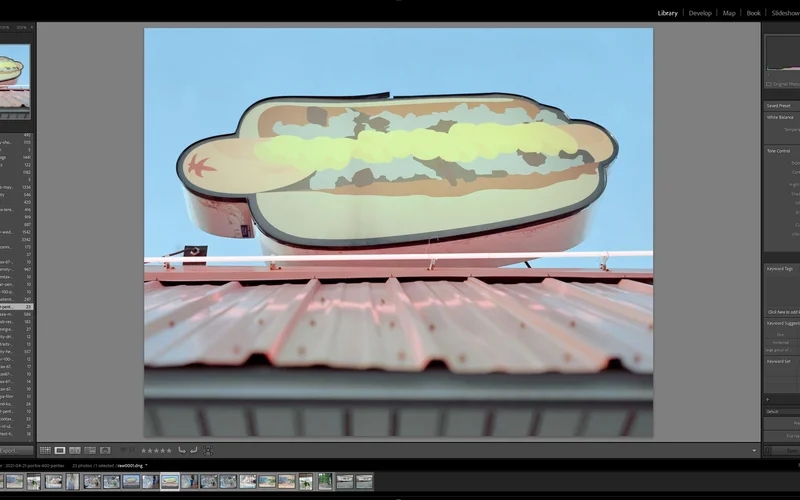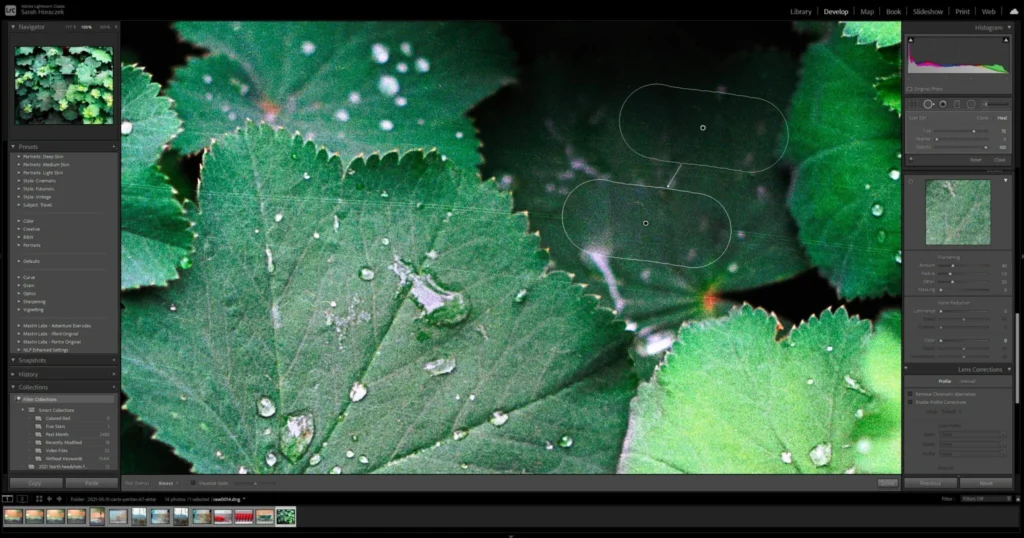Adobe Lightroom Classic continues to lead photo workflow solutions 15 years later.
 Adobe official website purchase
Adobe official website purchase
We may make revenue from products available on this page and may take part in affiliate programs to earn income. Learn more >
Photographers tend to be creatures of habit. We tend to become attached to lenses, camera bodies or software programs like Adobe Lightroom Classic; which has been around in some form or another since 2002 and now shares its namealong Creative Cloud lineup with another version known simply as Lightroom that gives users tighter integration with mobile versions of its program.
As is often the case for photographers, Lightroom users were unwilling to let go of the desktop version of Adobe Lightroom Classic and thus it continues to exist today.
Lightroom Classic remains relevant despite its age and position outside Adobe’s spotlight; some features may have become cumbersome over time and its resource management still burdensome; but Adobe continues to introduce new features regularly – recently with notable upgrades just this summer – giving this great image editing program new life and purpose. Here is a look at one of its current state.
What is Adobe Lightroom Classic?
Adobe Lightroom Classic may be hard to comprehend if you’ve never used it before, but in essence it is a photography workflow tool designed to import, organize, sort, edit and export images.
Adobe Lightroom Classic also facilitates tethered shooting, in which your camera is attached directly to a computer running Adobe Lightroom Classic and photos are shot directly into it. This can be especially helpful in studio situations where an onlooker wants to quickly see large previews of your photos so a creative director can review and provide instantaneous feedback as soon as you take them.
The powerful organizer.

Lightroom’s import interface can be particularly helpful for photographers working with large quantities of photos. The software creates catalogs into which photos (preferably those of raw variety) can be imported; some users create numerous separate catalogs while others simply organize all their folders and files within one large catalog – I prefer this latter solution simply because I trust myself not to misplace files from each catalog and find whatever images belong in which categories, rather than having everything all at once where it may take longer for me to find something.
Importing photos means moving them from memory cards onto your computer, or editing existing images already on it. Lightroom is a non-destructive editor; that means any changes made will be tracked in a separate file from where they originated rather than permanently altering original file itself; so if you brighten an image using Lightroom you are simply telling it “When this photo shows up again make it brighter”, rather than altering original files permanently; finished results won’t show until exported as JPG or TIFF file.
Photographers utilize collections in their catalogs in different ways; my workflow typically involves doing an initial sort by pressing “B” and adding select images directly to a quick collection, then later moving these to smart collections for further work without trashing others. Talking with another photographer might reveal their method works differently – something only possible through such longstanding software!
Once your images are selected, Adobe Lightroom Classic’s editing tools come into play. Similar to Photoshop’s Camera Raw feature, these include exposure, contrast, sharpness and crop tools that you may already be familiar with.
Lightroom’s editing process can be as straightforward or complex as you desire. Beginners might stick with using quick edit buttons in the Library module. As soon as you become more experienced, switching over to Develop module gives more granular control through sliders instead of buttons; plus more advanced tools such as tone curve manipulation or tweaking specific variables of individual colors are at your fingertips here too! So if an image looks over saturated in blues across dark areas – Lightroom Classic provides tools for you to fix that too!
Adobe Lightroom Classic’s Develop module also houses some other useful features. The Upright tool, for instance, automatically attempts to straighten out images that have an out-of-line horizon; so if a beach scene features an off-kilter horizon with waves crashing over it. Lens Correction gives you access to lens profiles which help smooth out quirks on different lenses; typically this flattens out field of view slightly while simultaneously brightening corners to counteract natural vignetting in images – this makes an enormous difference!
Local adjustments

Photoshop is unquestionably the go-to choice for in-depth retouching, yet Adobe Lightroom Classic does provide tools for making local adjustments such as spot removal. While useful, its brush options don’t come close to what can be found in Photoshop; so while its spot removal tool might quickly remove small marks off walls or dust spots off negatives quickly enough, doing a full portrait retouch with it might prove too awkward a task.
Gradient and radial filters are extremely useful if you need to correct oddities within the frame, like when one part of your photo appears much brighter than its surroundings. Radial filters also aid in curing any vignettes present – although adding one might make your photo worse in my experience!
Adjustment brush tools offer another powerful option, enabling users to select changes and paint them onto specific areas. For instance, if one part of an image appears too dark but otherwise is correct, this tool allows users to isolate its outlying area using its brush – much like Photoshop’s dodging and burning tools but with added benefits of applying contrast adjustments instead of only exposure ones.
Maps and Books

These features are combined as I rarely use them; even though my photos contain geotags, I prefer using Google Photos to track them instead of this feature. Books is great if you need a rough layout but many book services now provide their own workflow software.
Overall performance
Adobe Lightroom Classic has made remarkable improvements in terms of speed in recent years, starting to implement GPU acceleration in 2019. This was an encouraging sign.
Lightroom Classic typically runs quickly for me. Even on my several year-old laptop, I can still work at an acceptable (if not super fast) pace. I let Lightroom create previews as I import images – which may take more time but will save me time during editing later on.
As you switch between photos, there will always be an annoying delay while waiting for their high-res preview to load. Even on fast computers like mine with 64 GB RAM and an AMD Ryzen 9 processor, editing can become slow when moving quickly through them all. My main computer can even sound like it is about to take off when I’m quickly going through photos!
Lightroom Classic performed superbly on Apple’s M1-powered computers, from their tiny MacBook Airs all the way up to large desktops like my MBP Pros. Adobe should continue striving to speed up Lightroom Classic in future updates.
Who should buy Adobe Lightroom Classic?
Lightroom Classic remains one of the top photo workflow programs, but other products have emerged with some distinct advantages over it. Capture One Pro offers slightly better overall image quality and offers an enhanced editing interface; while Luminar boasts innovative AI-driven editing features which automate otherwise tedious tasks.
But ultimately, photographers turn back to Lightroom Classic. While its learning curve may initially present some difficulty, once you master its shortcuts and functionality, Lightroom Classic quickly becomes part of daily workflow and it becomes second nature – you get hooked into its addiction!
Adobe seems destined to move towards transitioning Lightroom Classic users over to its more advanced Lightroom software at some point in the near future, though I am surprised it hasn’t done more to promote such a transition already.
Adobe Lightroom Classic can only be accessed with a Creative Cloud subscription, currently offered in Photography plans such as Photography Plus (both versions of Lightroom), full Photoshop version and various mobile apps for only $10 per month. While I don’t enjoy having to subscribe (something many photographers find annoying), this low price plan certainly has its upsides, and faster updates make life as an subscriber worth living!
At present, Adobe Lightroom Classic remains unchallenged as the go-to photography workflow solution; however, competition grows increasingly intense each day.